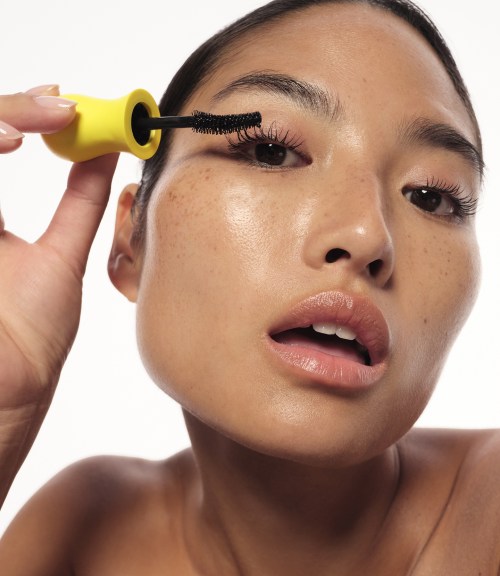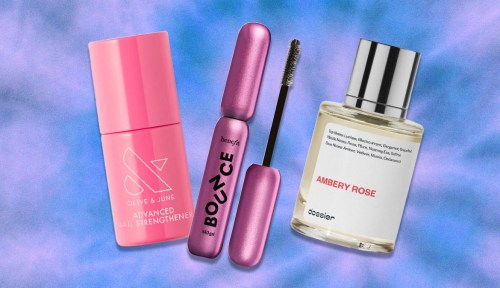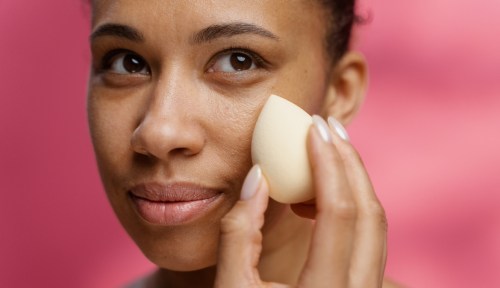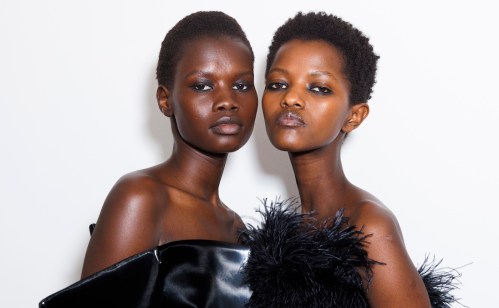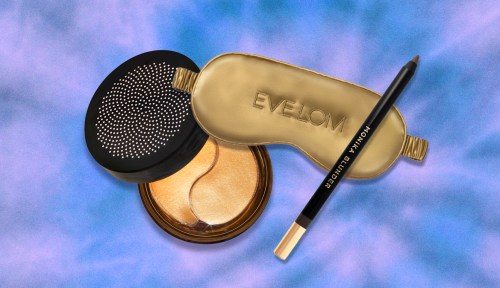Our editors independently select these products. Making a purchase through our links may earn Well+Good a commission
6 foundation myths makeup artists want you to stop believing right now
There are a lot of myths and misconceptions out there about the best way to apply foundation. Here, makeup artists tell us what's *really* the proper way.

Foundation is makeup’s most confusing category, and the cringe-worthy photos we’ve all got of ourselves with orange skin, an unblended line and/or a caked-on face serve as proof. Finding the right product (and then applying it) can be tricky, especially because there is so much information—and misinformation—out there on the subject. Thanks, Instagram.
For example, did you know that applying three coats of light-coverage foundation is not the same as applying one coat of a full-coverage option? Or that you shouldn’t be applying any type of foundation directly to your face? Jaw-dropping stuff, I know. To clear up some of the most common misconceptions in the makeup world, we asked makeup artists to debunk the foundation myths that they wish people would stop believing. This way, you’ll be fully matched (and blended to perfection) every time you apply.
Myth #1: Heavy foundation gives the best coverage
In spite of popular belief, “full-coverage” and “heavy formulas” are not mutually exclusive. While you certainly can cover your skin with something more intense, if that’s what you’re into, a light or sheer product is also fully capable of doing the trick. “Layering a foundation will get you the perfect, full coverage you are looking for, while still allowing your skin to look like skin,” says Julia Dalton-Brush, makeup artist and founder of B3 Balm.
Myth #2: Foundation should go straight from the bottle onto your face
In the interest of time, it’s tempting to squirt your foundation straight onto your fingers or sponge and slather it onto your skin, but there’s a middle step you might be missing that will make application more seamless. Makeup artist Gita Bass instead suggests putting it on the back of your hand first to warm it up because “foundation blends into skin better when it’s closer to skin temperature.” This, she explains, will help it from getting cake-y or flake-y on your face. Adding a drop or two of facial oil, like True Botanicals Renew Pure Radiance Oil ($110), can also help with the cake-y/flake-y situation, because the supplemental oiliness makes for smoother application.
Myth #3: Concealer comes before foundation
“It’s actually the reverse!” says celebrity makeup artist Angela Calisti. After you apply your foundation (which she likes to do with a kabuki brush and Younique Touch Spray Foundation), apply concealer lightly with your fingertips and dab it in areas that need a bit more coverage. For help in choosing the right one, peek here.
Myth #4: You can use the same foundation all year long
Yes, the idea of buying different foundations for different seasons is annoying… but not as annoying as seeing a photo of yourself and realizing your face is a totally different color than your body. Dalton-Brush says that it’s always a good idea to have a foundation wardrobe in order to avoid these kinds of mishaps. Ideally, you’d have a shade and formula you use during the humid summer months when your skin is likely to be more tan (because even the most militant SPF wearers might bronze slightly when spending extended periods in the sun), and one you rely on when your skin gets dry and more pale in the winter. If you want to keep things more minimalistic, though, you can hack your summer shade as a winter foundation with this MUA-approved tip.
Myth #5: You don’t need a primer
While there are certain foundations out there that don’t need a primer to help keep them in place (shoutout to long-wear formulas!), you’ll probably want to add the step before applying most other products on the market. “A primer is what sets your makeup and provides the perfect canvas for application,” says Calisti. Plus, there are primers for all different skin types these days.
Myth #6: Your foundation can help you fake a tan
If you are a diligent SPF wearer, foundation seems like the easiest product pick for helping you fake your glow. But when you use a darker shade to try and look tan, you could wind up simply looking like… you’re wearing the wrong shade. “Always try to match your foundation to your skin,” says Calisti, who suggests testing the shade in direct sunlight to make sure it’s a perfect match. If you want to get a faux glow, lightly apply a bronzer to the apples of your cheeks instead.
These foundations are so nice to skin they’re practically skin-care in a bottle. And here’s the one thing that Sephora’s best-selling foundations have in common.
Sign Up for Our Daily Newsletter
Get all the latest in wellness, trends, food, fitness, beauty, and more delivered right to your inbox.
Got it, you've been added to our email list.
